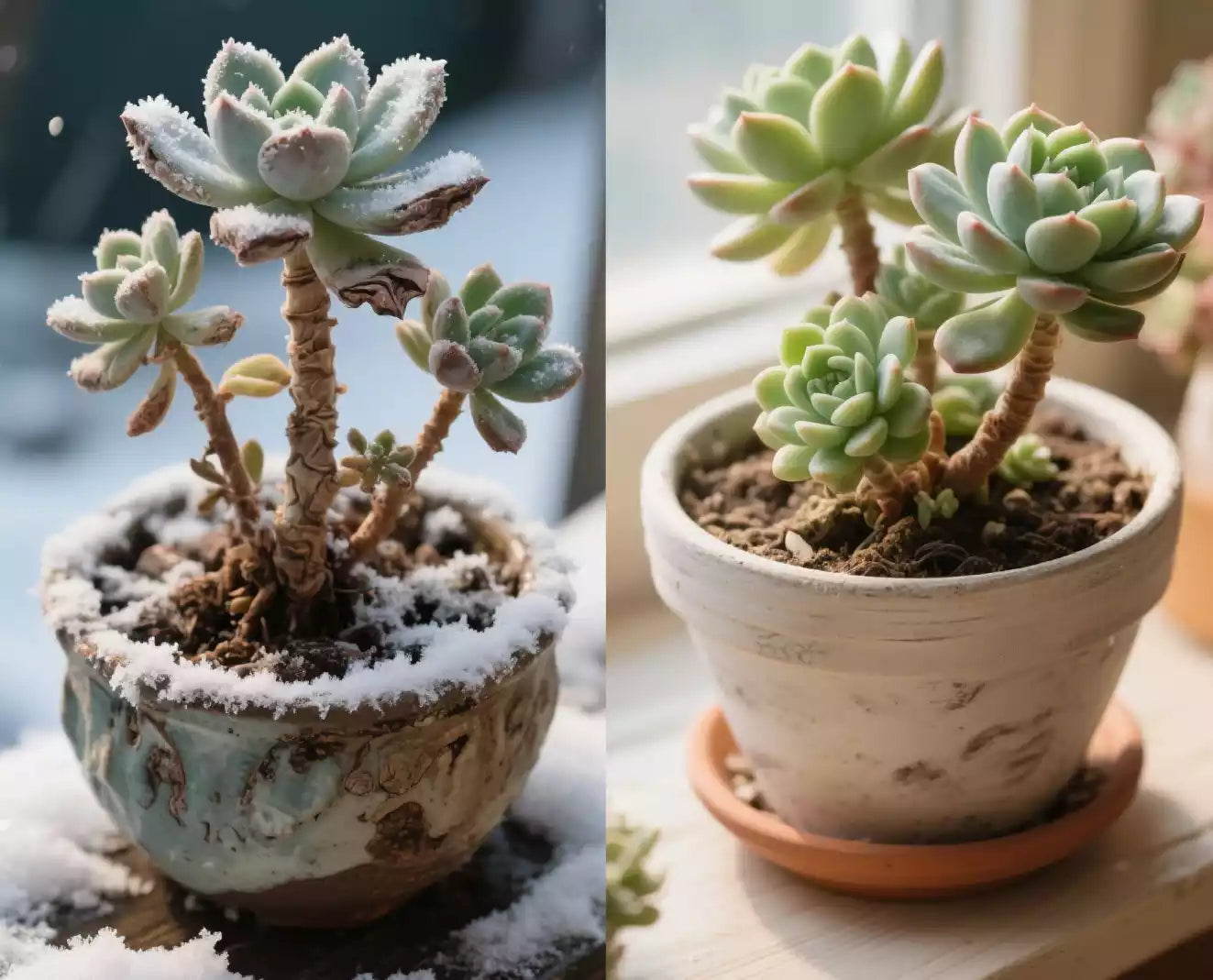
Can succulents survive the winter? Winter care tips
When the cold wind starts to blow and the flowers and plants in the garden begin to wither, many succulent enthusiasts start to worry: can these cute, plump little plants survive the cold winter? Don't worry! With these winter care tips, your succulents will not only survive the winter safely, but will also be full of life in the spring!
The “Cold Tolerance Truth” of Succulents
Succulents come in a wide variety of species, and their cold tolerance varies greatly. Most Sedum species thrive around 5°C, and when temperatures drop below 0°C, they are easily damaged by frost. Imagine their once plump, firm leaves becoming transparent and mushy from the cold—it’s truly heartbreaking. Therefore, it is crucial to understand the characteristics of your succulents before winter arrives. You can obtain accurate information by checking plant labels, searching online, or consulting a garden center.

Indoor Winter Care Guide
Many households choose to keep their succulents indoors during winter. First, select a warm and well-lit corner for your succulents. A south-facing window is an ideal location, providing 6–8 hours of sunlight daily to facilitate photosynthesis and maintain healthy growth. If natural light is insufficient, consider investing in a plant grow light, providing 8–10 hours of illumination daily to mimic natural sunlight.
Indoor air is typically drier in winter, which is good news for succulents, but watering frequency must be controlled. Compared to the growing season, succulents require significantly less water in winter, typically needing watering every 2–3 weeks. Watering should be done during the warm midday hours, with water temperature close to room temperature to avoid shocking the plant. When watering, slowly pour water along the edge of the pot, avoiding water accumulation at the center of the leaves to prevent rot.
Outdoor Wintering Tips for the “Hardcore”
If you live in the relatively mild climate of the southern United States or want to try overwintering succulents outdoors, there are some practical tips to follow. For succulents planted in the ground, cover the area around the plants with a thick layer of mulch, such as pine needles, straw, or wood chips, maintaining a thickness of 5–10 centimeters. This acts like a warm “blanket” for the succulents, providing insulation and reducing water evaporation.
Potted succulents can be grouped together against a wind-protected wall and covered with plastic sheeting or frost-proof fabric to create a simple “mini greenhouse.” It is important to note that on sunny days when temperatures are high, the covering should be partially removed to allow ventilation, preventing excessive internal temperatures and humidity that could lead to mold growth. Additionally, before extreme cold fronts arrive, wrapping flower pots with old blankets or thick clothing can provide extra protection for succulents.

Common misconceptions about winter care
Some plant enthusiasts believe that fertilizing succulents in winter can enhance their resistance, but this is incorrect. Succulents grow slowly in winter and have minimal fertilizer requirements. Fertilizing them may actually cause fertilizer damage and harm the root system. Others worry about succulents lacking water and watering them frequently, resulting in root rot. Remember, succulents fear waterlogging more than drought; it is better to water less than too much.
Additionally, avoid moving succulents during their dormant period. Frequent changes in temperature and light conditions can disrupt their growth rhythm, affecting their growth and flowering the following year. Allowing succulents to spend the winter in a relatively stable environment is the wise choice.
As long as you understand the characteristics of succulents and master the correct care methods, your succulents can thrive even in the cold winter. Watching these resilient and adorable little plants maintain their unique charm in the cold wind doesn't it make all your efforts worthwhile? Take action now and create a warm and comfortable “winter nest” for your succulents!
Share